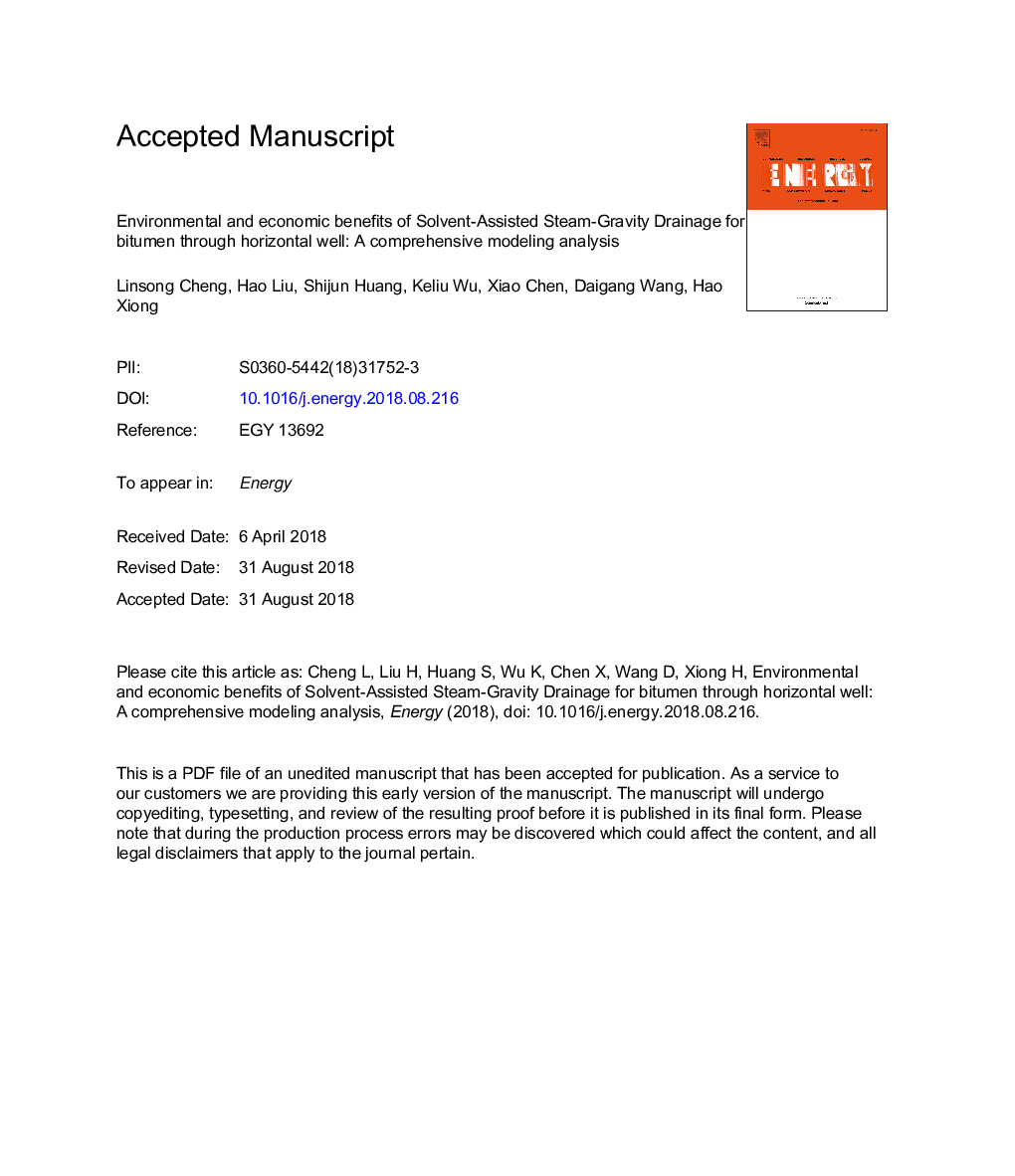| Article ID | Journal | Published Year | Pages | File Type |
|---|---|---|---|---|
| 10147762 | Energy | 2018 | 30 Pages |
Abstract
The addition of solvent to steam injection, known as Solvent-Assisted Steam-Gravity Drainage (SA-SAGD), has recently been regarded as a more economically-efficient and environmentally-friendly alternative to Steam-Assisted Gravity Drainage (SAGD). In this paper, we present a mathematical model for estimating greenhouse gas (GHG) emissions and chamber evolution considering non-uniform property distribution along the horizontal well for SA-SAGD. In addition, oil price, carbon tax and liquid pool corresponding to the influences of the market, environmental needs and technology are incorporated into the model to analyze the economic benefits. The calculated results show that, when the liquid-pool level is 3â¯m, the reduction in GHG emissions is 30% by injecting C3/C5 solvents and 16.5% when the solvent is C7. If the liquid level is as high as 5â¯m, there will be no reduction in carbon emissions for the C5/C7 solvent injection. When both oil price and the carbon tax are at high levels, the C5/C7-assisted SAGD has the best economic performance. The C3-assisted SAGD is best when the oil price is low and the carbon tax is high. When the oil price and carbon tax are low, there is no economic advantage for the solvent-assisted SAGD.
Related Topics
Physical Sciences and Engineering
Energy
Energy (General)
Authors
Linsong Cheng, Hao Liu, Shijun Huang, Keliu Wu, Xiao Chen, Daigang Wang, Hao Xiong,
